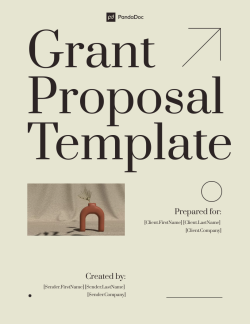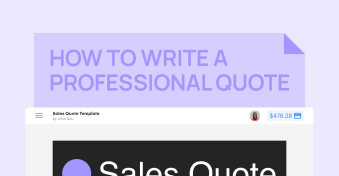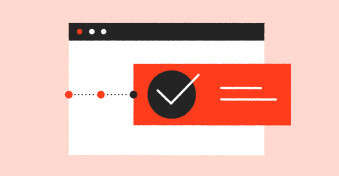A grant proposal is a request for funding that organizations submit to grant-making bodies.
In grant proposals, organizations present an initiative, explain its objectives and expected timeline, provide evidence of its importance, and describe how they would use grant funds to implement it.
To be successful, a grant proposal must convince potential funders of the value and impact of the proposed project.
In this guide, we outline how to efficiently create a winning grant proposal.
→DOWNLOAD NOW: FREE GRANT PROPOSAL TEMPLATE
Key takeaways
- An effective grant proposal showcases an organization’s dedication to its mission and builds ties with grant-making organizations.
- To write and submit a robust grant proposal, an organization needs to plan the required time and expenses, understand their project, and clearly define success scenarios.
- Telling a compelling story in a grant proposal shows the potential impact of the project and attracts funders’ interest.
- A grant inquiry letter may be required to get approval from a grant-making organization before sending a grant proposal.
- Business proposal software can help you handle all related documents (support letters, résumés of key personnel, and so on) that are required for a successful grant application.
Why should you seek grant funding
Grant writing can open doors to funding sources that are vital to your project’s success.
In fact, submitting three to five grant applications may put your chances of winning at least one grant at around 90%.
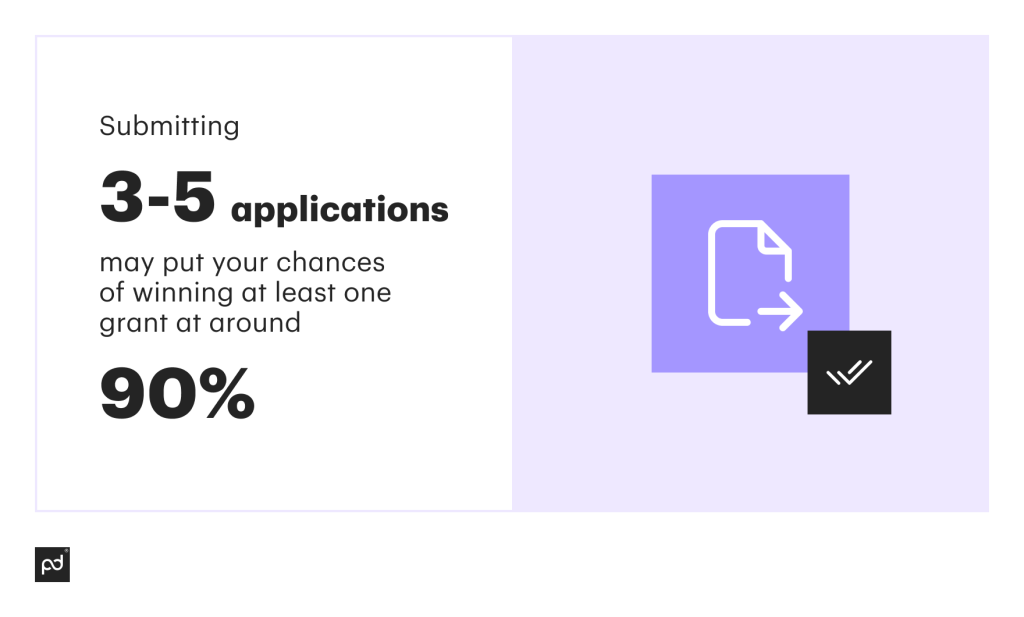
Keep in mind that grant-making entities want to invest in projects and initiatives that will have a powerful impact on issues they care about.
The United States government offers thousands of grants that nonprofit organizations may apply for, providing various amounts of funding for projects that will have an impact across the country.
Additionally, around 40% of Fortune 500 companies have volunteer grant programs, through which they provide financial grants to nonprofits and recognize volunteer work done by their employees.

How can you get ready to write your grant proposal letter
Before you start writing, take the time to prepare carefully. Consider each of the following.
1. Plan your time and expenses
Applying for grants means setting aside time to search for the right grants, writing proposals, and going through the grant selection process.
Plan for this time as well as any associated costs, such as for research and professional writing help.
2. Consider both success and failure scenarios
Most organizations rely on multiple funding sources, and grant opportunities shouldn’t change that.
Remember that grants can be competitive and funding limited.
Compare the value of an award against the time you will need to invest before pursuing an opportunity.
3. Have a strong understanding of your project
Be clear about desired outcomes, estimated timelines, and other funding sources before you start writing a grant application.
Your proposal will be evaluated by grant-making bodies and committees who may choose to award funds to your competitors or simply choose not to award any funding due to a lack of matching and/or credible proposals.
4. Register or create accounts
You may also need to create an online account and go through verification processes before you can submit grant applications — for example, organizations seeking federal funding need to register with the federal grant program before they can request a grant.
5. Submit a grant inquiry before writing a full grant proposal
See if submitting a grant inquiry first makes sense.
If the grant-making body responds positively to your inquiry and sends you a request for a formal grant proposal, you can proceed with writing a detailed RFP response.
4. Save time by using document management software
Document management software can assist you in preparing a thorough and professional grant application.
And modern software tools can handle quotes as well as agreements, contracts, and other types of documents that grants may require.
With those basics out of the way, let’s look at the structure you should adhere to for a standard grant proposal.
How to create a compelling grant proposal
A well-written grant proposal is your chance to make a great impression on a potential funder.
It should be engaging and to the point, highlighting why your project is important and deserves the grant.
Follow the steps below to create a compelling proposal that will help you win the grant you need.
Step 1. Write a strong cover letter
Your cover letter is the perfect opportunity to captivate a funder with a casual tone and urge them to delve into your proposal.
Here are some dos and don’ts when it comes to cover letters:
| DO: | DON’T: |
|---|---|
| Keep it short. Get to the point quickly and state your intentions up front. Don’t exceed three to four paragraphs. | Get too emotional. There’s no need to write a heartfelt story about your mission or organization. Convey your message in a conversational manner, but stay focused on your arguments. |
| Say what you need. At the very beginning of the cover letter, mention how much money you need and for what purpose. Don’t be afraid to be direct — you deserve this grant, so make sure the reader knows it. | Mention your competition. Don’t reference or compare yourself to competing organizations. Just state your desired outcome and make a good first impression. |
| Make a connection. Show that you understand the funder and draw a straight line from their mission and funds to your proposed project. | Repeat yourself. This isn’t the place to recap what you wrote in your proposal. Instead, provide additional information that is valuable to the reader. |
Here is how a good cover letter can start:
Dear Mr. Jones,
[Name of Clinic] respectfully requests a grant of $30,000 for our veterinary hospital project in South Boston.
As the largest independent pet hospital in this part of the city, we are aware of the challenges pet owners in our service area are facing. We are particularly concerned about the lack of service quality in South Boston given that it has the largest number of pets per capita of any neighborhood in the city.
We are committed to solving this issue by growing our community and providing our expertise to the people and animals of South Boston by the end of 2024.
The veterinary hospital project will allow us to provide access […]
No fluff and right to the point!
Step 2. Create an executive summary
To produce a winning grant proposal, you should start with an executive summary.
Also known as a proposal summary, an executive summary is a brief synopsis of the entire proposal.
It should introduce your organization, market segment, and project goals, offering specifics yet getting right to the point.
| DO: | DON’T: |
|---|---|
| Limit the summary to two pages. Provide just enough information to give the grantor a solid idea of who you are and what you need the money for. | Address the funder directly. The only place to do this is in the cover letter. In the grant application, the tone should be more formal. |
| Discuss funds. Mention the funds you’re requesting, and briefly explain your methodology when it comes to spending them. | Give too much information. Don’t go too deep into the project description, as you will have space for this later. |
| Introduce your organization. Tell the grantor (in brief) about your organization’s history, mission, and objectives. |
Here are some questions that a good grant writer will answer in the executive summary:
1. What is the organization’s mission and history? What does the organization do?
2. What is the project about? Who will it help?
3. What problem is the organization solving, and why does it matter?
4. What is the end goal for the project, and how can the organization measure its achievement?
5. Why should the organization receive the grant? What are the organization’s competencies?
6. How much money does the organization need, and how does it plan to finance the project in the future? Are there other funding sources?
Step 3. Introduce your organization
Now that you’ve set the stage for the entire proposal, you can start with introducing your organization.
Share as much relevant information as you can about your infrastructure, history, mission, experience, etc.
Here, you should include information about key staff members, success stories demonstrating your track record and highlighting your expertise, and an explanation of the organization’s goals and philosophy.
Client recommendations, letters of thanks, and feedback from customers and the general public should definitely be included in a grant proposal.
Be sure to also include valid industry certifications (ISO or quality certifications), licenses, and business and indemnity insurance details.
You need to show that your company or organization has the capacity to produce all deliverables while meeting all legal, safety, and quality obligations.
You may also need to provide solvency statements to prove that you can meet your financial commitments to your staff and contractors.
| DO: | DON’T: |
|---|---|
| Be objective. It’s easy to start patting yourself on the back a little too much and try to convince grant reviewers that you’re the best of the best. Try to avoid this trap and stay factual. | Go into too much detail. You don’t need to list all of your employees by name. Provide short bios of key staff (like the executive director) and simply mention the total number of employees. |
| Provide a backstory. When was the company/organization started, and why? Try to connect your mission to that of the grantmaker as naturally as possible. | Stray from the point. This entire section should be formulated to make the point that you’re the organization best suited to make good use of the funding. |
→DOWNLOAD NOW: FREE GRANT PROPOSAL TEMPLATE
Step 4. Write a direct problem statement
One of the most important parts of the grant proposal structure is the problem statement.
Also known as the needs statement or statement of need, this is where you explain the problem you have identified and how you can solve it.
You may have to do extensive research on the history of the underlying problem, including previous solutions that were implemented and potentially failed.
Then, you should explain why your solution will make a difference.
In a winning grant proposal, the problem statement will heavily rely on quantitative data and clearly display how your organization answers a need.
| DO: | DON’T: |
|---|---|
| Display relevant existing data. Look at the results achieved by others who have already implemented your solution or a similar solution. | Make it about you. It’s not your organization that needs the grant funding; it’s everyone who will benefit. |
| Highlight the urgency. Underline why it’s essential to start this project now rather than later. | Use circular reasoning. For example, instead of saying that the city doesn’t have a youth center and we can build one, talk about why the city needs a youth center in the first place. That should be the thinking behind your writing process. |
| Focus on the main problem. Stick to the key problem you’re addressing rather than talking about contributing factors. |
Here’s how a brief problem statement could look:
A 2023 report from [Name of Institution] showed that the city of [Name of City] has the highest [problem + rate] per capita in the state of [Name of State]. Another study by [Name of Institution] confirmed these findings in 2024, highlighting the importance of [potential solution] in dealing with these issues.
There is a need for education and professional services in [list of fields and industries], backed by expertise and strong infrastructure.
To meet this need, [Name of Organization] proposes a program for [program’s purpose] that would, for the first time, address the problem of [description of problem].
With PandaDoc, you get a free grant proposal template that has all of these sections incorporated!
Step 5. State your goals and objectives
Another important part of the grant proposal is clearly stating your goals and objectives.
Whereas goals are broad statements of what you wish to achieve, objectives are specific, with measurable outcomes and time frames.
Many grant proposals fail because they do not present clear goals or do not define how objectives will be measured.
This section is key to providing information on the benefits that the funder, community, government, or client (if different from the funder) will see for their investment.
| DO: | DON’T: |
|---|---|
| State objectives as outcomes. An objective is something you want to achieve, not do. | Be too ambitious. Make sure your goals are attainable, and don’t get ahead of yourself. |
| Make your objectives SMART. You can’t track your progress if your objectives aren’t SMART: Specific, Measurable, Attainable, Realistic, and Time-bound. | Mistake goals for processes. Goals should be stated as results and measurable outcomes with a deadline, not as processes. |
| Connect goals and objectives to the audience. The final result of your project should always be the betterment of your community, expressed in a measurable way. |
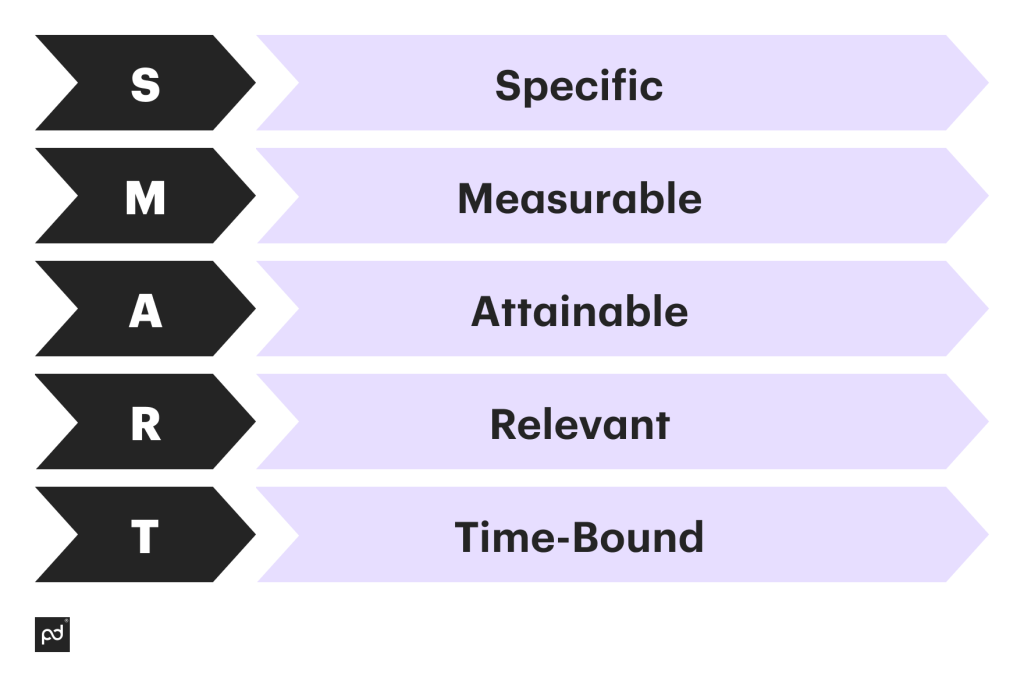
Here is an example of a well-formulated goal and objective.
Goal: Improve literacy and the overall ability to express oneself among children from inner-city schools in [Name of Community].
Objective: To improve, by the end of the 2024 school year, the results of reading and writing tests among fourth-graders in [Name of Community] by at least 20% compared to current results (average 55/100).
Notice how the goal is optimistic and abstract while the objective is measurable and specific.
Step 6. Choose methods and strategies to achieve your goals
Now that the funding agency knows your goals, it’s time to tell them how you plan on achieving them.
List the new hires and skills, facilities, means of transportation, and other resources you need to deliver the project and achieve your definition of success.
| DO: | DON’T: |
|---|---|
| Connect to the objectives. Your strategies need to be connected to the objectives you’ve outlined, as well as to the needs statement. | Assume things. Don’t approach topics assuming the reader is well-versed in the field. Be specific and introduce your methodologies as though you’re talking to someone who knows nothing about your organization or your ideas. |
| Provide examples. If you can, find examples of when these same strategies worked for previous projects. | Forget your audience. You need to demonstrate that the particular strategies you have chosen make sense for your audience. |
| Demonstrate cost-effectiveness. Make sure that the grantmaker realizes your methods are rational, well-researched, and cost-effective. |
Step 7. Include success metrics
In this section of your grant proposal, you need to cover how you will track your program’s progress.
You should also include the time frame needed for evaluation and who will complete it, including the specific skills or products needed and the cost of the evaluation phase of the project.
This is one of the most important steps in writing a grant proposal, as all funders will look for evaluations.
Whether government agencies or private foundations, grantmakers want to know if the programs they have invested in make a difference.
Keep in mind that an evaluation can be expensive, so you should clearly define the scope of activities involved as well as your methodologies.
| DO: | DON’T: |
|---|---|
| Obtain feedback. However you imagine your evaluation process, it needs to include some sort of feedback from the community affected by the project. | Be vague. You need to clearly outline measurement methods for metrics that will tell both you and your funders how the program is doing. |
| Decide between internal and external evaluation: whether your own staff will be doing the assessment or you will hire an external agency to perform it independently. | Neglect time frames. It’s not just about measuring success; it’s about measuring success over time. Make sure your evaluation strategies are periodic. |
To go back to our child literacy example, here is how an evaluation strategy might look:
Project Evaluation
Program facilitators will administer a set of pre-tests and post-tests to students in order to determine to which degree the project is fulfilling objectives. Tests will be created by external collaborators (experts in child education) and will take place on a monthly basis for the duration of the program.
After each session, participating teachers will be asked to write a qualitative evaluation in order to identify areas for improvement and generate feedback […]
Step 8. Include funding sources and ensure sustainability
Your funders won’t like the idea of investing in a short-term project that has no prospects.
They’ll be much more willing to reward a promising project that can run on a larger scale.
That’s why you need to show how you can make this happen.
This section of your grant proposal is for funding requirements that go beyond the project: the total cost of ownership including ongoing maintenance, daily business operations, and operational support.
You should articulate projected ongoing costs for at least five years.
An accurate cost model needs to include inflation, specialist skills, ongoing training, potential future growth, and decommissioning expenses when the project or product reaches the end of its life cycle.
| DO: | DON’T: |
|---|---|
| Have a solid blueprint. Most grant reviewers will know a thing or two about business plans, so you need to show a viable blueprint for sustainability. Exactly how will you generate revenue and keep the project going? | Leave anything out. Don’t leave space for speculation or filling in the blanks. Everything needs to be outlined and you need to show — without a doubt — that your program can run even after the initial resources are gone. |
| Mention other funding. If you plan to get more government funding, this is the place to mention it, as doing so is a good long-term strategy. |
Step 9. Outline your project budget
Of course, one of the most important grant proposal topics is budgeting. This is the moment when you go into detail about exactly how you’ll use the grant resources.
Make sure to justify all expenses. Remember that the project budget section is the true meat of your grant proposal.
Having too high of a budget can lose you the grant and even be seen as an attempt at profiteering.
Underquoting might win you the grant, but you may not be able to deliver on your proposal, which could harm your standing as a grantee in the funder’s eyes.
Many grant writers underquote in the hope of increasing their attractiveness and then looking for additional funding at a later stage.
However, this is a dangerous game to play and could affect your individual or company brand, community standing, and industry reputation.
| DO: | DON’T: |
|---|---|
| Pay attention to detail. Everything needs to be covered. Travel costs, supplies, advertising, personnel — don’t leave anything out. | Do it alone. Especially if you’re not that good with numbers, don’t hesitate to include other people and assemble a team to tackle this task. |
| Double-check. It can be easy to leave out a zero or move a decimal point and distort all your figures. Be thorough! | Forget about indirect costs. A lot of grant writers leave out indirect costs like insurance, utilities, and trash pickup. These can stack up, so don’t forget them! |
| Round your numbers. A lot of decimal values and uneven numbers make the proposed budget harder to follow. |
Here’s how a project budget might look for a cross-country research study grant:
| Item | Qty. | Cost | Subtotal | Total |
|---|---|---|---|---|
| Jet travel | ||||
| LA-London (roundtrip) | 4 | $1,100 | $4,400 | $4,400 |
| Project Allowance | ||||
| Research Assistant | 6 months | $500 | $3,000 | |
| Moderator | 6 months | $400 | $2,400 | |
| SD memory cards | 10 | $50 | $500 | |
| Laptop Computer | 2 | $1,120 | $2,240 | |
| Automation software subscription | 6 months | $20 | $120 | |
| Camera and aux. equipment | 1 | $2,400 | $2,400 | |
| Office space | 6 months | $1,200 | $7,200 | |
| Transportation within country | 6 months | $2,000 | $12,000 | |
| Total Project Allowance | $34,260 | |||
| Administrative fee | $140 | |||
| Total Grant request | $34,400 |
Below a table like this one, you can further clarify any key points, like what a research assistant will do and why they’re needed for the study.
What are the 5 Rs of grant writing?
Grant proposals usually vary in length from 5 to 25 pages, depending on how complex the project is and the specific requirements of the funding body.
The length of a grant proposal should be proportionate to the grant amount; smaller grants need less detail.
The five Rs of grant writing are essential principles that guide the process to increase the chances of success:
- Read: Carefully review the grant guidelines and requirements.
- Research: Understand the funding organization’s mission and priorities.
- Reflect: Align your proposal with both your goals and the funder’s objectives.
- Write: Clearly and concisely communicate your project plan and impact.
- Revise: Edit and refine your proposal to ensure clarity and adherence to guidelines.
Simplify your grant proposal writing with efficient software
Writing an accurate and effective grant proposal can be time-consuming and costly, but you can use software to save time and money.
With hundreds of customizable templates, the PandaDoc platform can help you ensure that your proposal is professional and tailored to your organization’s specific needs.
You can use it to seamlessly create, eSign, and share your grant proposals, then later leverage comprehensive document analytics and tracking to monitor their impact in real time.
Schedule a demo to learn more about optimizing and expediting your grant proposal writing.
Frequently asked questions about grant proposals
-
It’s quite easy to confuse a grant proposal with a grant letter.
But a grant proposal contains all the sections we mentioned: the project’s summary, a cover letter, problem statement, etc. and is typically pretty long.
Some companies or individual investors consider this document too long and prefer a grant letter, which is a shorter, much more streamlined document. A grant letter typically doesn’t exceed 3-4 pages although it has a similar structure.
-
Here you should emphasize the significance of your project and its contribution to science if implemented successfully.
Back it up with relevant statistics, scientific facts, and research data on the subject. It’s important to use simple terms comprehensible to the prospective Grantee.
Also, explain why you are the one who can finish this project: provide some proof of your expertise to make your proposal stronger.
-
Besides the project description, you need to mention how it will improve the education system.
Detail how your project will improve student’s productivity, increase their knowledge, and make their overall learning process better.
Educational projects usually involve a team of people who will put the idea into practice. Provide more information about each team member and why this person can perform their duties.
-
Even though the inspiration can’t be forced, an art project should be time-specific. Mention the start and end date of your activity.
Otherwise, a prospective grant may not take it seriously.
Primarily you should convey your message to the grant-making organization, even if they don’t know much about the kind of art you create. Explain the idea in the simplest way so anybody can understand it clearly.
-
Unlike other organizations, an NGO needs to drill down to the key community issues and show how deeply its work can affect the people it’s meant to serve.
Given the democratic and often local nature of NGOs, their work will be viewed more through an altruistic lens.
An NGO also needs to pay special attention to demonstrating the sustainability of the project over time, since that’s a unique problem to NGOs and something that commercial businesses have already dealt with.
-
There isn’t a strict rule when it comes to grant proposals — their length will always depend on the complexity of the issue it covers and the amount of research behind it.
Typically, a grant proposal should be up to 25 pages, although different funding institutions will often put this in their “Rules” section — so read those carefully!
-
Proposal writing is slightly different from regular writing: it needs to follow a specific structure and rules.
Add to that all the research and argumentation needed to write a good proposal, and you’ll be looking at hours, days, or even weeks if you’re really a perfectionist.
As a rule of thumb, you should devote one week to writing a proposal. Although you might finish earlier, it’s good to have enough time to cover everything.
-
The typical grant proposal is structured with key components: an executive summary, a statement of need, a project description, a budget, and a concluding section. PandaDoc templates streamline the grant-writing process with pre-designed frameworks, ensuring all key elements are included, saving time, and guaranteeing compliance. On the other hand, creating a proposal from scratch provides complete flexibility, although this approach is time-consuming and necessitates a thorough understanding of proper proposal structure and formatting.
-
Depending on the project and the funder, grant proposals usually fall between five and twenty-five pages in length. Smaller grants need shorter proposals, while larger ones need more details.
Disclaimer
PandaDoc is not a law firm, or a substitute for an attorney or law firm. This page is not intended to and does not provide legal advice. Should you have legal questions on the validity of e-signatures or digital signatures and the enforceability thereof, please consult with an attorney or law firm. Use of PandaDocs services are governed by our Terms of Use and Privacy Policy.
Originally was published March 2014 and has been updated for comprehensiveness in January, 2025
